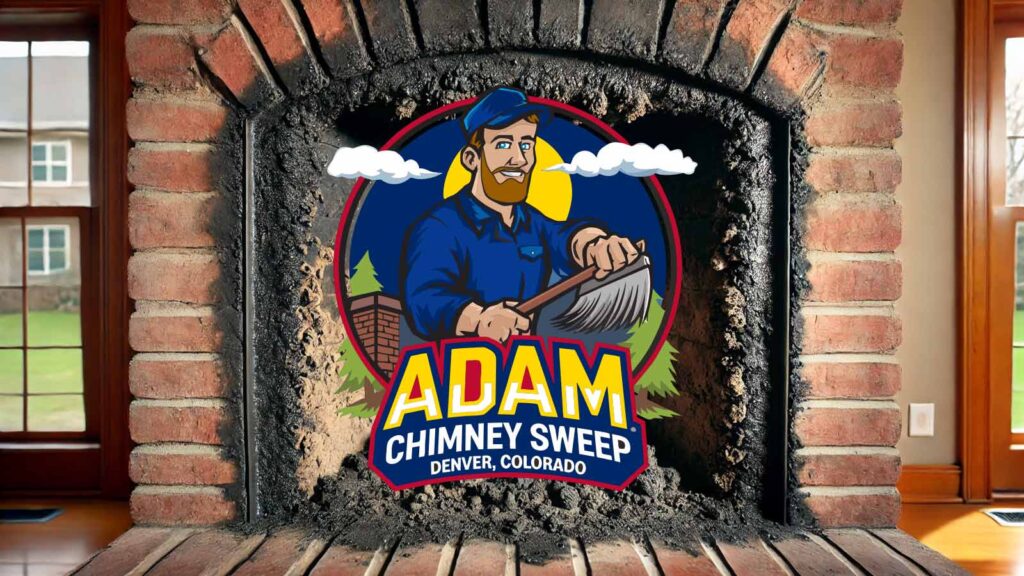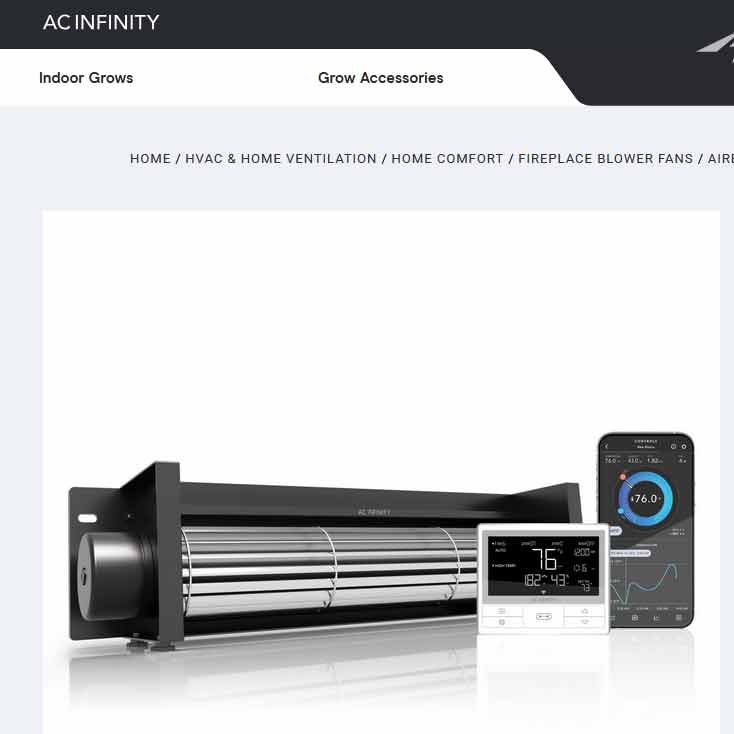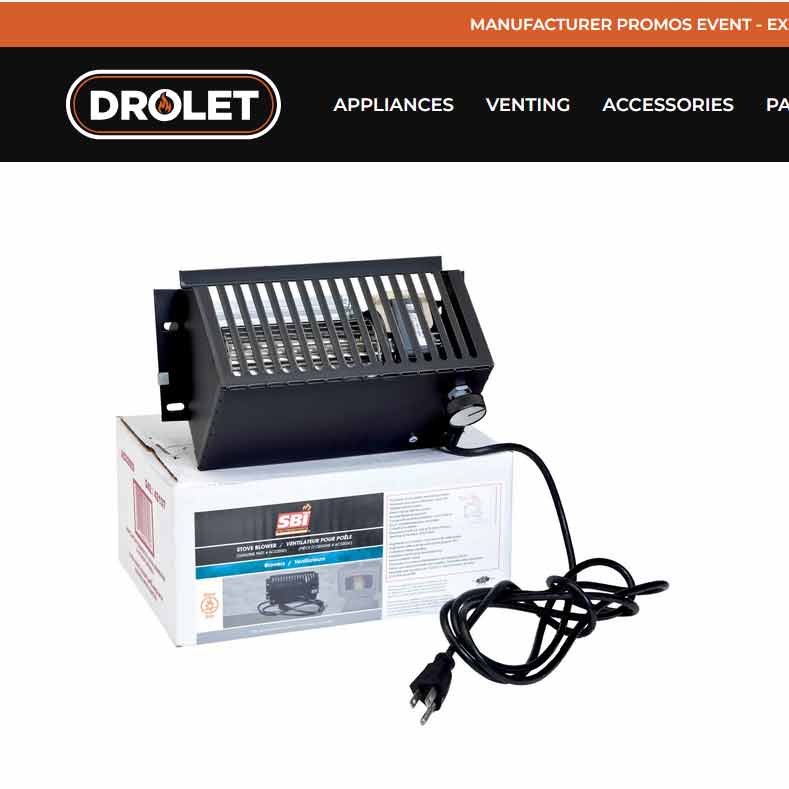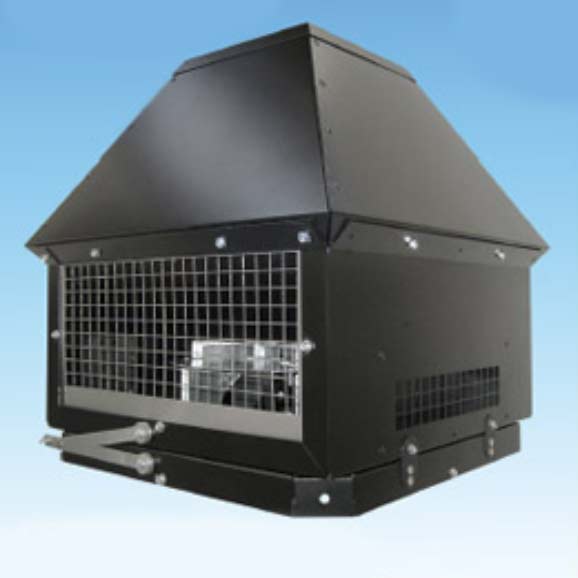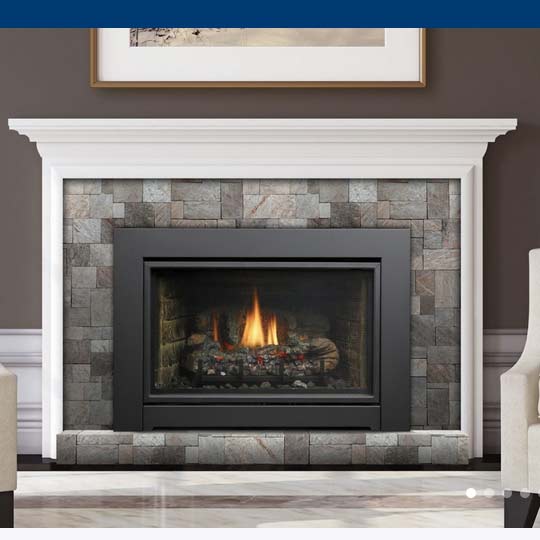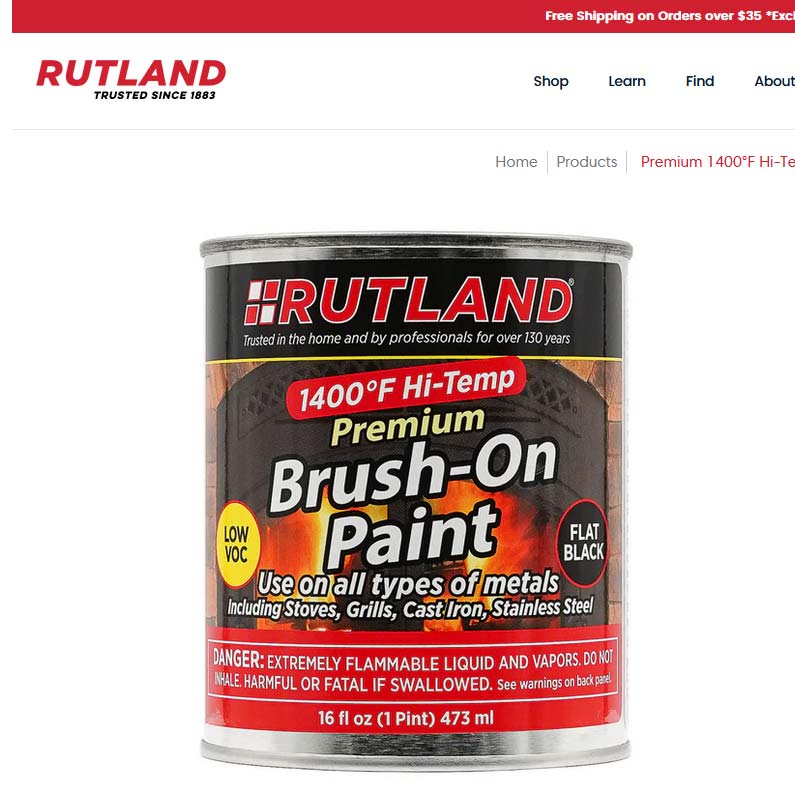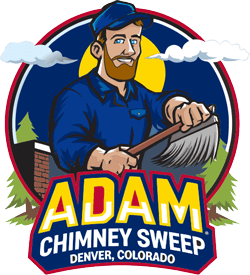What is Creosote, and Why Should You Care?
Creosote is a dark, sticky substance inside your chimney or flue when burning wood or other fuels. While it might seem harmless at first glance, creosote is highly flammable and poses a significant fire hazard. According to the National Fire Protection Association (NFPA), creosote buildup is one of the leading causes of chimney fires in the United States.
Are you uncertain about your chimney’s condition? Get educated on chimney anatomy now.

The Science of Creosote Formation
When wood burns, it releases gases, water vapor, and unburned particles. These byproducts rise through the chimney and calm as they reach the upper parts. As they cool, the gases condense into a tar-like residue, which hardens over time. The three stages of creosote buildup are:

- Stage 1: Flaky and Easy to Remove
In its earliest form, creosote appears as a flaky deposit. At this stage, professional chimney sweeps can easily brush it away. - Stage 2: Crunchy and Stubborn
Over time, creosote hardens into a crunchy, tar-like substance. Removal at this stage requires specialized tools and more effort. - Stage 3: Glazed and Dangerous
The most dangerous form of creosote is a thick, glazed layer that adheres tightly to the chimney walls. It’s highly flammable and requires chemical treatment or professional removal.
Why Creosote Buildup is Dangerous
Fire Hazard
Creosote is highly flammable. A tiny spark or high temperatures in the chimney can ignite it, causing a chimney fire that may spread to other parts of your home.
Reduced Efficiency
A layer of creosote restricts airflow in the chimney, making your fireplace or stove less efficient. This means you’ll burn more fuel for less heat.
Carbon Monoxide Poisoning
Blockages caused by creosote can lead to improper ventilation, allowing dangerous gases like carbon monoxide to enter your living space.
Structural Damage
Over time, creosote buildup can weaken your chimney’s structure, causing cracks or even collapse.
Signs of Creosote Buildup
Watch for these warning signs that your chimney may have excessive creosote:
- Black, Sooty Deposits: Visible in your fireplace or the chimney walls.
- Strong, Smoky Odor: A sign of poor ventilation or blockages.
- Reduced Draft: Difficulty starting or maintaining a fire due to restricted airflow.
- Thick Smoke: Excessive smoke enters your home when the fireplace is used.
- Greasy Black Stains: Found on the chimney cap or flue.
Factors That Accelerate Creosote Buildup

- Burning Unseasoned Wood
Wet or green wood produces more smoke and water vapor, leading to faster creosote formation. - Cool Chimney Temperatures
Inadequate insulation can cause the chimney to cool down quickly, allowing creosote to condense. - Poor Airflow
Blocked chimney caps or dampers restrict airflow, increasing creosote accumulation. - Infrequent Cleaning
Neglecting regular chimney sweeps allows creosote to accumulate unchecked.
How to Prevent Creosote Buildup
- Burn Seasoned Firewood
Use wood that has been dried for at least six months. Seasoned wood burns cleaner and produces less smoke. - Maintain Proper Airflow
Open the damper fully and ensure the chimney cap is clear of debris. - Use the Right Appliances
Modern, EPA-certified stoves and fireplaces are designed for efficient combustion and produce less creosote. - Schedule Regular Chimney Inspections
Annual inspections by a certified chimney sweep can identify and address creosote buildup early. - Install a Chimney Liner
A liner helps maintain consistent temperatures and prevents creosote from adhering to the chimney walls. - Avoid Overloading Your Fireplace
Burning large, roaring fires can lead to incomplete combustion and increased creosote production.
Professional Creosote Removal: What to Expect
When DIY cleaning isn’t enough, professional chimney sweeps step in to handle the job. Here’s what the process typically involves:
- Inspection: The sweep will assess the level of creosote buildup and inspect the chimney for other issues.
- Cleaning: Using brushes, vacuums, and specialized tools, the technician will remove creosote deposits.
- Chemical Treatment: For stage 3 creosote, a chemical agent may be applied to break down the hardened layer.
- Post-Cleaning Inspection: The chimney is re-inspected to ensure all creosote has been removed.
The Cost of Neglect: Real-Life Examples
- Chimney Fire in a Mountain Cabin
A homeowner in Colorado experienced a chimney fire after neglecting annual cleaning. The fire caused extensive damage to the chimney and roof, costing over $10,000 in repairs. - Carbon Monoxide Poisoning in a Suburban Home
Blockages caused by creosote led to poor ventilation in a suburban home. The family suffered carbon monoxide poisoning but fortunately survived, thanks to a functioning detector.
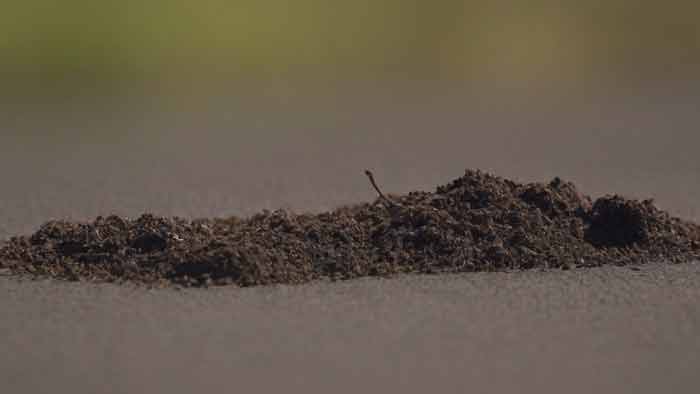
FAQs About Creosote Buildup
Q1: How often should I clean my chimney to prevent creosote buildup?
A: It depends on usage, but the NFPA recommends an annual inspection and cleaning if necessary.
Q2: Can I burn chemicals or cleaning logs to remove creosote?
A: While cleaning logs can reduce light buildup, they are not a substitute for professional cleaning.
Q3: Is creosote harmful to breathe?
A: Inhaling creosote particles can irritate the respiratory system and cause long-term health issues.
The Future of Chimney Maintenance: Innovations in Creosote Prevention
Advancements in chimney technology are helping reduce the risks associated with creosote:
- Bright Chimney Caps: These are equipped with sensors to monitor airflow and detect blockages.
- High-Efficiency Inserts: Designed to burn fuel more completely, reducing creosote production.
- Eco-Friendly Cleaning Agents: Non-toxic chemicals for safe creosote removal.
Conclusion: Stay Safe, Stay Warm
Creosote buildup is a silent but serious threat to your home and family. By understanding its dangers, recognizing the signs, and scheduling regular chimney maintenance, you can enjoy a safe and efficient fireplace all year round.
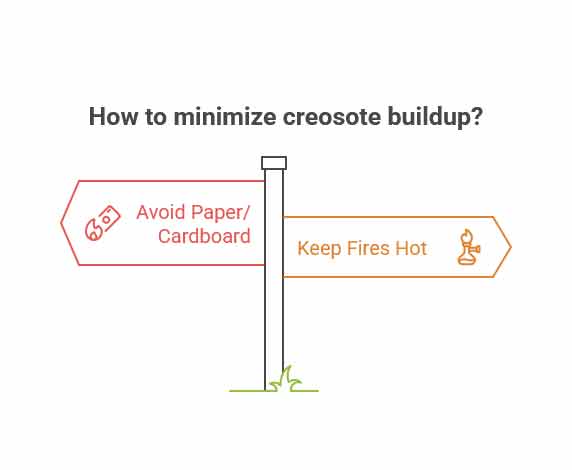
DIY Tips for Minimizing Creosote Buildup
While professional chimney cleaning is essential, there are simple steps homeowners can take to reduce creosote buildup between cleanings:
1. Practice Proper Burning Techniques
- Avoid Paper and Cardboard: These materials burn quickly, producing large amounts of smoke and ash that contribute to creosote buildup.
- Keep Fires Hot: A consistent fire burns wood more efficiently, reducing the unburned particles that cause creosote.
2. Install a Heat-Resistant Chimney Thermometer
- A chimney thermometer helps monitor the temperature inside the flue. Ideal temperatures range from 250°F to 500°F. If it falls below this range, creosote may begin to form.
3. Clean the Fireplace Regularly
- Remove ashes and soot buildup in the firebox to maintain airflow and combustion.
4. Use Seasoned Hardwood
- Hardwoods like oak, maple, and birch burn cleaner and hotter than softwoods, minimizing creosote production.
The Role of Weather in the Creosote Formation
Chimneys in regions with extreme weather conditions, such as cold winters or high humidity, are more susceptible to creosote buildup. Here’s how weather impacts your chimney:
Cold Climates
- Chimneys are used more frequently in areas with prolonged cold seasons, such as Colorado. However, lower outside temperatures cause smoke to cool faster, increasing creosote condensation.
Humidity and Moisture
- Rain and humidity can introduce moisture into the chimney, mixing with soot and creosote to form a sticky residue. Installing a chimney cap prevents water intrusion.
High Wind Areas
- High winds can disrupt the draft in your chimney, leading to incomplete combustion. To combat this issue, ensure your chimney cap is securely installed and in good condition.
Creosote and Different Heating Appliances
The type of heating appliance you use significantly affects the rate of creosote buildup.
Traditional Fireplaces
- Open fireplaces often have a less efficient draft, leading to higher smoke production and creosote buildup.
Wood Stoves
- Modern wood stoves are designed to burn wood more efficiently and produce less creosote. However, older models may still contribute to significant buildup.
Pellet Stoves
- These appliances use compressed sawdust pellets and other wood waste, producing minimal creosote.
Gas Fireplaces
- Gas fireplaces don’t produce creosote since they don’t burn wood, but regular inspections are still necessary to ensure proper ventilation and safety.

How to Choose a Professional Chimney Sweep
Selecting the right chimney service provider is crucial for effective creosote removal. Here’s what to look for:
- Certifications
- Look for technicians certified by the Chimney Safety Institute of America (CSIA) or similar organizations.
- Experience
- Choose a company with a proven track record in chimney cleaning and repair.
- References and Reviews
- Read online reviews and ask for references to gauge customer satisfaction.
- Comprehensive Services
- Opt for a provider that offers a range of services, including inspections, cleaning, and repairs, to ensure your chimney receives complete care.
Myths About Creosote Buildup
Misconceptions about chimney maintenance can lead to neglect and safety risks. Let’s debunk some common myths:
- Myth 1: “Creosote is only a problem in old chimneys.”
- Truth: Any chimney can accumulate creosote, regardless of age.
- Myth 2: “Burning aluminum cans cleans the chimney.”
- Truth: This practice does nothing to remove creosote and may damage the chimney.
- Myth 3: “I don’t need an inspection if I rarely use my fireplace.”
- Truth: Even infrequent use can lead to creosote buildup and blockages. Annual inspections are essential.
Creosote Buildup in Historic Homes
Historic homes often feature older chimneys that require extra care:
Challenges
- Aging Masonry: Cracked bricks and mortar can worsen creosote buildup.
- Outdated Flues: Narrow or damaged flues restrict airflow, increasing smoke production.
Solutions
- Chimney Relining: Installing a modern stainless steel liner can improve airflow and reduce creosote.
- Routine Maintenance: Regular inspections and cleanings are even more critical for older chimneys.
Technological Advancements in Creosote Prevention
The chimney industry continues to innovate with tools and techniques to combat creosote:
- Rotary Cleaning Systems
- These advanced brushes spin at high speeds to remove even the most challenging creosote deposits.
- Chimney Cameras
- High-definition cameras allow technicians to inspect hard-to-reach areas for buildup and damage.
- Creosote-Reducing Logs
- These logs release chemicals that help break down light creosote deposits, making them easier to clean.
- Catalytic Combustors
- Installed in stoves, these devices enhance combustion efficiency, reducing creosote production.
Environmental Impact of Creosote Buildup
Creosote isn’t just a hazard for homeowners—it can also impact the environment. Here’s how:
Air Pollution
- When creosote-laden chimneys burn inefficiently, they release particulates and harmful gases into the air. This contributes to poor air quality and increases the risk of respiratory issues in nearby communities.
Contaminated Soil and Water
- Improper disposal of creosote-laden debris can seep into soil and water sources, posing risks to plants, animals, and humans. Always ensure professional handling of chimney waste.
Sustainable Practices
- Using seasoned wood and modern stoves can reduce creosote buildup, minimizing the environmental footprint of your chimney.
Emergency Situations Caused by Creosote Buildup
Chimney Fires
- Creosote is the leading cause of chimney fires. These fires often burn at extremely high temperatures and can spread quickly to the rest of your home.
Carbon Monoxide Poisoning
- Blocked flues caused by creosote can trap carbon monoxide, a colorless and odorless gas, in your home. A properly functioning carbon monoxide detector is crucial.
Structural Damage
- Creosote buildup combined with moisture can significantly damage your chimney’s structural integrity. Cracks and leaks may eventually compromise your home’s safety.
Cost of Creosote Neglect
Neglecting creosote buildup can result in costly repairs and replacements. Here’s a breakdown of potential expenses:
| Issue | Estimated Cost | Prevention Tip |
|---|---|---|
| Chimney Fire Damage | $10,000–$50,000 | Annual cleaning and inspection |
| Carbon Monoxide Remediation | $500–$1,000 | Install detectors and ensure proper ventilation |
| Chimney Relining | $2,500–$5,000 | Address creosote before it damages the liner |
| Brick-and-mortar repairs | $1,000–$3,000 | Prevent moisture intrusion by cleaning regularly |
Investing in regular maintenance saves you money and stress over time.
Creosote Prevention: Seasonal Tips
Adjust your maintenance habits according to the season to minimize creosote buildup year-round.
Spring & Summer
- Schedule Inspections: Take advantage of the off-season to schedule chimney inspections and cleaning.
- Seal Chimney Caps: Prevent animals and debris from entering during low-use months.
Fall
- Test Chimney Draft: Ensure proper airflow before the heating season begins.
- Use Proper Firewood: Stock up on seasoned wood to burn during winter.
Winter
- Monitor Fires: Avoid smoldering fires that burn inefficiently, increasing creosote.
- Check Chimney Temperature: Keep fires hot to minimize creosote condensation.
Local Creosote Stories: Real-Life Examples
A Cabin Near Grand Mesa
A homeowner located just 0.5 miles south of Grand Mesa experienced a severe chimney blockage due to creosote. Smoke was backing into the cabin, and the family contacted us immediately. After thoroughly cleaning and inspection, we removed a dangerous Stage 3 creosote buildup, restoring their chimney’s functionality.
A Historic Home in Fruita
An older home near Fruita, about 0.3 miles from the Dinosaur Journey Museum, had extensive creosote damage in its masonry chimney. We relined the chimney with a modern stainless steel liner, ensuring an efficient draft and reduced creosote production for future use.
A Ski Chalet Near Powderhorn
A ski chalet near Powderhorn Ski Resort required emergency cleaning after its chimney emitted thick smoke into the living area. The issue was traced to a faulty damper and heavy creosote buildup. We addressed the problems, allowing the owners to enjoy a safe and warm winter retreat.
Creosote-Free Fireplace Checklist
Use this checklist to keep your chimney safe and creosote-free:
- ✅ Burn only seasoned hardwood.
- ✅ Schedule annual inspections.
- ✅ Install a chimney cap for moisture and debris protection.
- ✅ Avoid burning trash, cardboard, or glossy paper.
- ✅ Maintain hot, steady fires for efficient combustion.
- ✅ Use creosote-reducing logs as a supplementary measure.
- ✅ Regularly clean the fireplace and ash box.
The Future of Chimney Safety
The chimney industry is adopting cutting-edge technologies to address creosote-related issues more effectively.
AI-Powered Chimney Inspections
- Advanced camera systems with AI capabilities can detect creosote buildup and structural issues in real time.
Eco-Friendly Solutions
- Innovations in biofuel stoves and clean-burning technologies aim to eliminate creosote production.
Automated Cleaning Systems
- Some modern chimneys have built-in cleaning mechanisms that automatically reduce creosote buildup.
Creosote buildup is more than a maintenance issue—it’s a safety concern that requires proactive management. By understanding the risks, investing in regular cleaning, and staying informed about new technologies, you can keep your chimney safe, efficient, and creosote-free for years.

Conclusion: A Clean Chimney is a Safe Chimney
Maintaining your chimney isn’t just about improving efficiency—it’s about protecting your home and family from serious hazards like creosote buildup, chimney fires, and carbon monoxide poisoning. Regular inspections, professional cleanings, and proper wood-burning techniques ensure your fireplace operates safely and effectively. Whether you live near historic landmarks, scenic routes, or in the heart of your community, Adam Chimney Sweep is here to help you maintain a safe and cozy home year-round. Contact us today for expert advice and exceptional service tailored to your needs.
More info can be found on the National Fire Protection Association.
